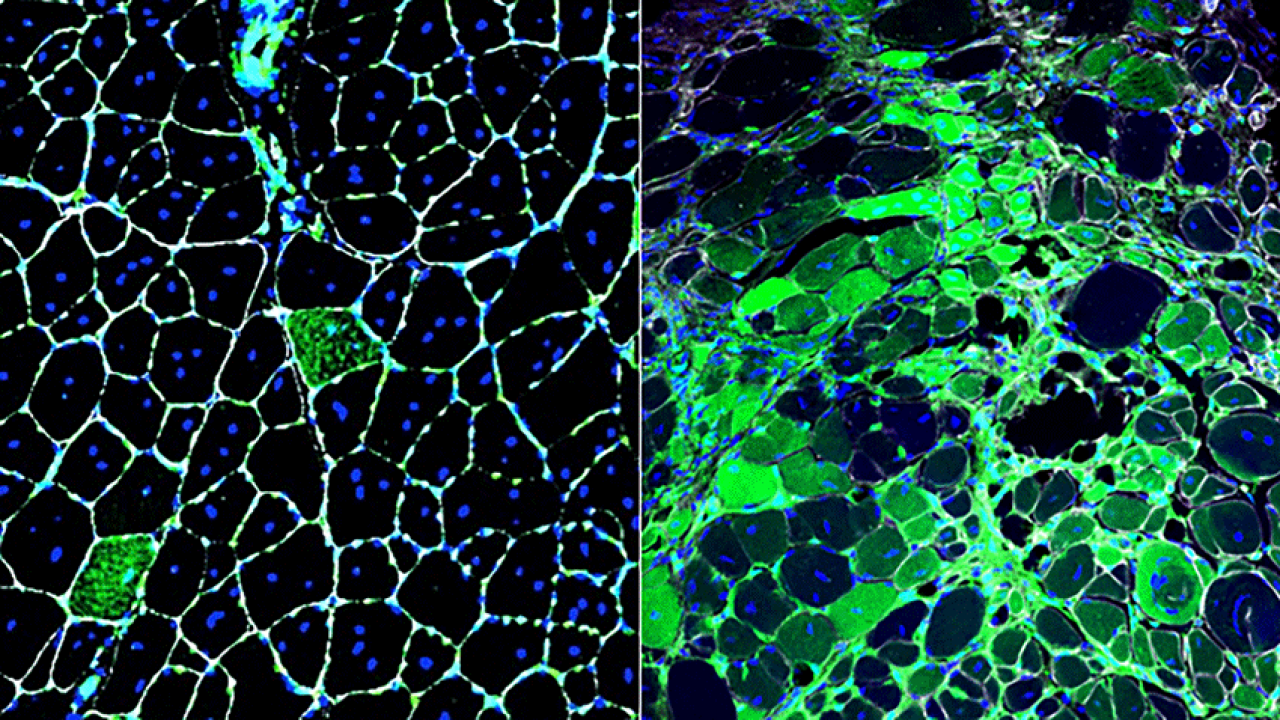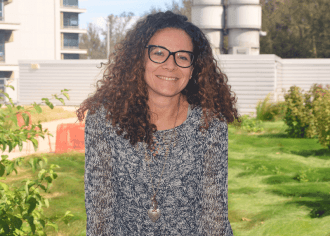
Newly discovered radiation-resistant stem cells are normally rare and inactive (left), but they take on a major role in muscle repair when regular stem cells are damaged by radiation (right). Credit: Brack lab / UCSF.
Muscle damage is a common side effect of radiation therapy for cancer treatment, and is made worse because the very stem cells responsible for repairing injured muscles typically bear the brunt of radiation damage.
Now UC San Francisco researchers have discovered a new type of stem cell in mouse muscles that is resistant to radiation and other forms of cellular stress. The findings have implications for improving recovery for cancer patients undergoing radiotherapy and could even lead to treatments to protect future astronauts from the ravages of deep-space radiation.
Annarita Scaramozza, PhD, of the UCSF Department of Orthopaedic Surgery, discovered the small population of stem cells — identifiable by their expression of a gene called Pax3 — which normally remain inactive within mouse muscles. But when some stressful event — such as radiation exposure — wipes out the muscles’ main pool of stem cells, these cells leap into action and can help regrow damaged muscles.

“It was remarkable to see how these reserve cells that we’d previously overlooked were able to withstand levels of radiation that severely damaged all other stem cells, and then wake up and start regrowing the damaged muscles,” Scaramozza said. “They were like superhero stem cells.”
The results were published April 18 in Cell Stem Cell, alongside a second study showing that these resilient reserve stem cells are not just resistant to radiation, but also take over when regular stem cells are damaged by environmental toxins found in plastics and other pollutants.
Scaramozza and colleagues in the laboratory of Andrew Brack, PhD, also found that regular stem cells can be made radiation-resistant by treating them with anti-oxidizing agents that are well tolerated in humans.